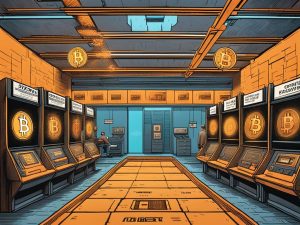Exploring the Hidden Landscape of Asylum Detention Facilities 🌍
This article delves into the intricate network of asylum detention centers, particularly focusing on Louisiana, which ranks high in detaining asylum seekers and migrants. Advocates have widely criticized the conditions within these facilities, highlighting a system that is often punitive rather than supportive. The stark realities faced by those caught in this system reveal a chaotic and flawed approach to handling immigrants seeking refuge.
The Burgeoning Challenge of Asylum Seeking in Louisiana 🚪
This year, Louisiana has emerged as a significant player in the immigration detention landscape, detaining more individuals than traditional states like California and Texas. Asylum seekers face a maze of barriers that complicate their paths to safety. The asylum process is marred by heavy variables, including differential outcomes based on geographical location and access to legal representation. Advocates stress that many are unaware of the sheer volume of migrants detained in the state, leading to an environment rife with injustice.
The experiences shared by detainees often paint a grim picture. Descriptors such as “hellhole” capture the dismal living conditions and arbitrary nature of the asylum process. The concept of “refugee roulette” comes into play, where the fate of individuals hinges not on their circumstances but rather on a lot of chance—like the judge assigned to their case, the state where they are detained, and legal assistance available to them.
The History Behind the System’s Expansion 📜
Louisiana’s recent rise in detaining immigrants stems from a mix of political shifts and systemic changes. Historically known as the incarceration capital of the nation, the state saw a change in trajectory after a criminal justice reform bill in 2017 led to an influx of unutilized jail beds. Meanwhile, parallel efforts in other states aimed to restrict local immigration detention influenced the increasing presence of ICE in Louisiana’s facilities.
Many of the jails repurposed for ICE detainees had troubling pasts in terms of abuse and neglect when they were criminal detention facilities. Advocates suggest that these systemic issues have simply continued in the immigration detention settings. Reports from detainees frequently reflect a lack of adequate food, poor water quality, and a general atmosphere of despair, with basic human rights violations commonplace.
Voices from Inside the Detention Centers 🗣️
Life inside these detention facilities is fraught with challenges. Advocates like Tanya Wolf visit detainees regularly, noting the deplorable conditions, including spoiled food and subpar water. One detainee’s narrative highlights the drastic measures people take to escape threatening situations—like fleeing from drug traffickers in their home countries—only to find themselves in a grim reality in Louisiana.
This year, a coalition of advocacy groups compiled a report based on extensive interviews with detainees, revealing alarming statistics about mistreatment, including physical and mental abuse, denial of medical care, and deplorable living conditions filled with contamination. One facility, formerly a state prison called “Win,” has come under scrutiny for its treatment of detainees, illustrating the systemic failures embedded in the immigration detention framework.
Judicial Barriers and the Struggles Ahead ⚖️
Asylum seekers often contend with daunting barriers, including rural immigration courts. Many detainees find themselves in remote areas with limited access to legal resources, creating disparities in legal representation. The outcome of their cases frequently correlates with location and the availability of experienced legal counsel. Instances of judges with high denial rates magnify the inequities within the system, leading to devastating ramifications for Mr. Martinez and countless others.
Minimal infrastructure to support detentions further exacerbates the challenges faced by migrants. Following their release, individuals often have nowhere to turn, making assistance programs essential in navigating their next steps. Organizations like La Aid are stepping in to support asylum seekers in finding exit routes and reconnecting with family while they await their hearings, which can stretch on for years.
Hot Take: A Call for Change 📣
The current state of asylum detention facilities reveals a systemic crisis requiring urgent attention. Many within the migration assistance community desire a future where detention centers no longer exist. Individuals facing risks in their home countries deserve humane treatment and the opportunity to pursue their asylum cases without the burdens of punitive conditions. The time for reform is now—ensuring that support systems exist to truly assist those navigating this challenging journey to safety.





 By
By
 By
By
 By
By

 By
By